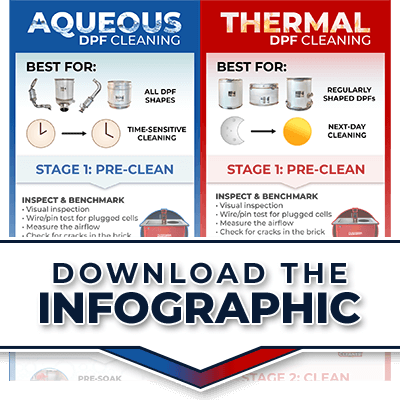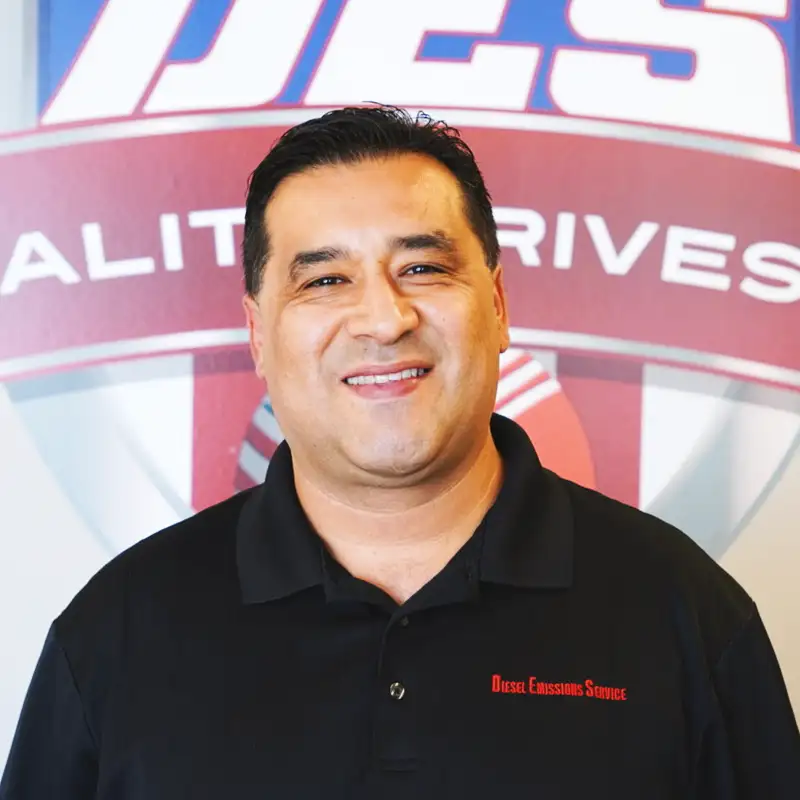Page Section – Quick-links
Choose your own path to DPF Cleaning independence
Choose your own path to DPF Cleaning independence
There are 2 DFP Cleaning methods we have systems for: Thermal and Aqueous.
Each method has different strengths and benefits.
One of our customers decided to go with both cleaning methods – leveraging the combined strengths to cover a wider range of scenarios. Learn more in this Case Study.
Consider each DPF Cleaning option to see which is a good fit for your fleet. Ask yourself some of the key questions we ask to better understand each customer’s situation.
Then get educated on some common DPF Cleaning topics such as why and how often.
Finally, learn about Filtertrak, a powerful software tool to easily manage all your DPF Cleaning service data in one place
Let’s get started…
There are 2 distinct DFP Cleaning methods we have systems for: Thermal and Aqueous.
Each method has different strengths and benefits.
Start by considering some key questions and explore each DPF Cleaning process to help decide which one is for your fleet.
Then get educated on some common questions about DPF Cleaning such as why and how often.
Finally, learn how you can use Filtertrak, a powerful software tool to easily manage all your DPF Cleaning service data in one place
Let’s get started…
Which DPF Cleaning process is right for your fleet?
We can help you answer this question based on the unique needs of your fleet. Factors to consider include the types of filters your trucks have, duty cycles, driving conditions, off-road vs on road, etc. Whatever your needs are we’ve got you covered.
Explore the 2 main types of DPF Cleaning systems below.
Key Questions to consider when looking at DPF Cleaning methods.
Get educated on DPF Cleaning best practices
Having the right DPF Cleaning Equipment for your fleet is just the beginning.
You don’t need to “reinvent the wheel”
A key element is also using the correct cleaning process. Establishing and following the right process for each filter is the best way to ensure consistent, predictable results for your fleet.
Without this, you’re at the mercy of external DPF cleaning facilities. You can either hope for the best or have rock-solid confidence in your own in-house cleaning operation. Your choice.
The Filtertherm® team has spent nearly 15 years cleaning tens of thousands of filters. We’ve extensively fine-tuned and tested the process in our own DPF Cleaning facilities.
We are happy to share this knowledge with you and can even provide training for your technicians.
Why Clean your own DPFs?
A DPF (diesel particulate filter) is designed to catch & oxidize soot (unburned fuel/lube oil) and turn it into ash. The ash is pushed to the bottom of the filter and stored there. Over time it builds up and requires cleaning. With the cost of some new DPFs soaring to over $12,000, routine maintenance is key.
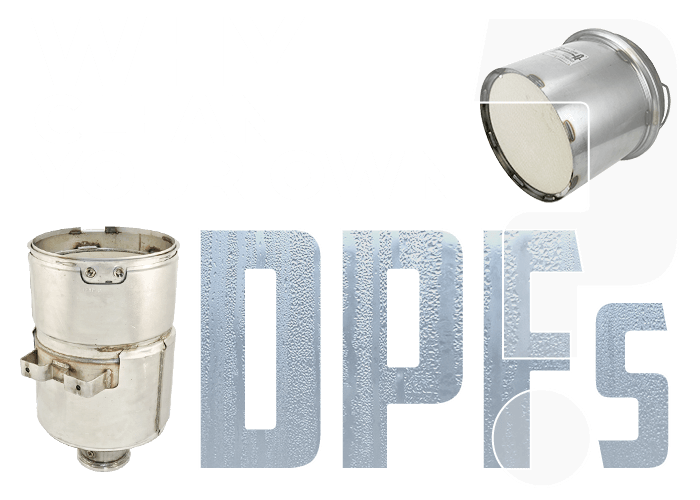
Being proactive & in control of your fleet service intervals can drastically decrease downtime and service expenses. At the same time increasing operational efficiency and profit. Thus, it’s important to regularly inspect, clean, and track your filters, not only to preserve the functionality of each filter but to save on fuel and protect your engines.
How often should you clean your DPFs?
There have been many myths and misconceptions about aftertreatment systems. Some people think you can just ignore them until the dreaded “derate”. Others think you can base all emissions servicing on the OE specs alone. That’s just not the case in the real world.
OE service recommendations are between 200,000 – 300,000 miles, or 4500 hours – whichever comes first. Aftermarket manufacturers of DPFs recommend cleaning at 50,000 – 70,000 miles, or 1,000 hours – whichever comes first. These numbers are generally overly optimistic and presume perfect operating conditions.
Based on our experience, Filtertherm® recommends servicing your DPF at least once a year. Removing the soot regularly will help extend the life and performance of your fleet’s aftertreatment systems and engines. Hardened ash build-up in the system restricts the flow and often causes unnecessary engine issues or failures.
It’s vital to establish a maintenance schedule that also takes into consideration the real-world driving conditions of the vehicle. Trucks that are run in stop-and-go traffic or high idling situations often need dpf cleanings at closer intervals.
Proper DPF maintenance is key to a healthy truck & in turn a HEALTHY FLEET.
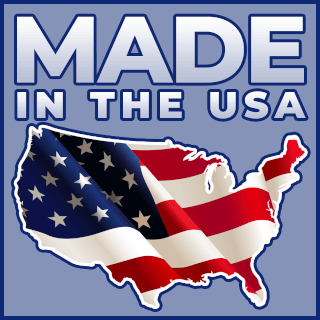
Designed & Built in the USA!
Designed and Built in the USA
DPF Service Tracking Software
FILTERtrak™ custom-built, cloud-based, searchable software tool for Fleets and DPF Cleaning facilities.
FILTERtrak™ stores before/after filter pictures, vehicle info, filter info, cleaning records, and more.
FILTERtrak™ is responsive making it simple to use & view all your DPF service data on multiple devices!
Get a FREE 1-year subscription to FILTERtrak™ (a $1,200 value) with the purchase of any Filtertherm DPF cleaning package.
Visit the FILTERtrak™ website to learn more.
Get the right DPF Cleaning solution for your FLEET.
Give us a call. Get Answers.
Use our ROI tool to see how quickly this investment can save your fleet time and money. Financing is now available. Check it out!
Call or email to schedule a meeting with our National Sales Manager, Anthony Soto.

